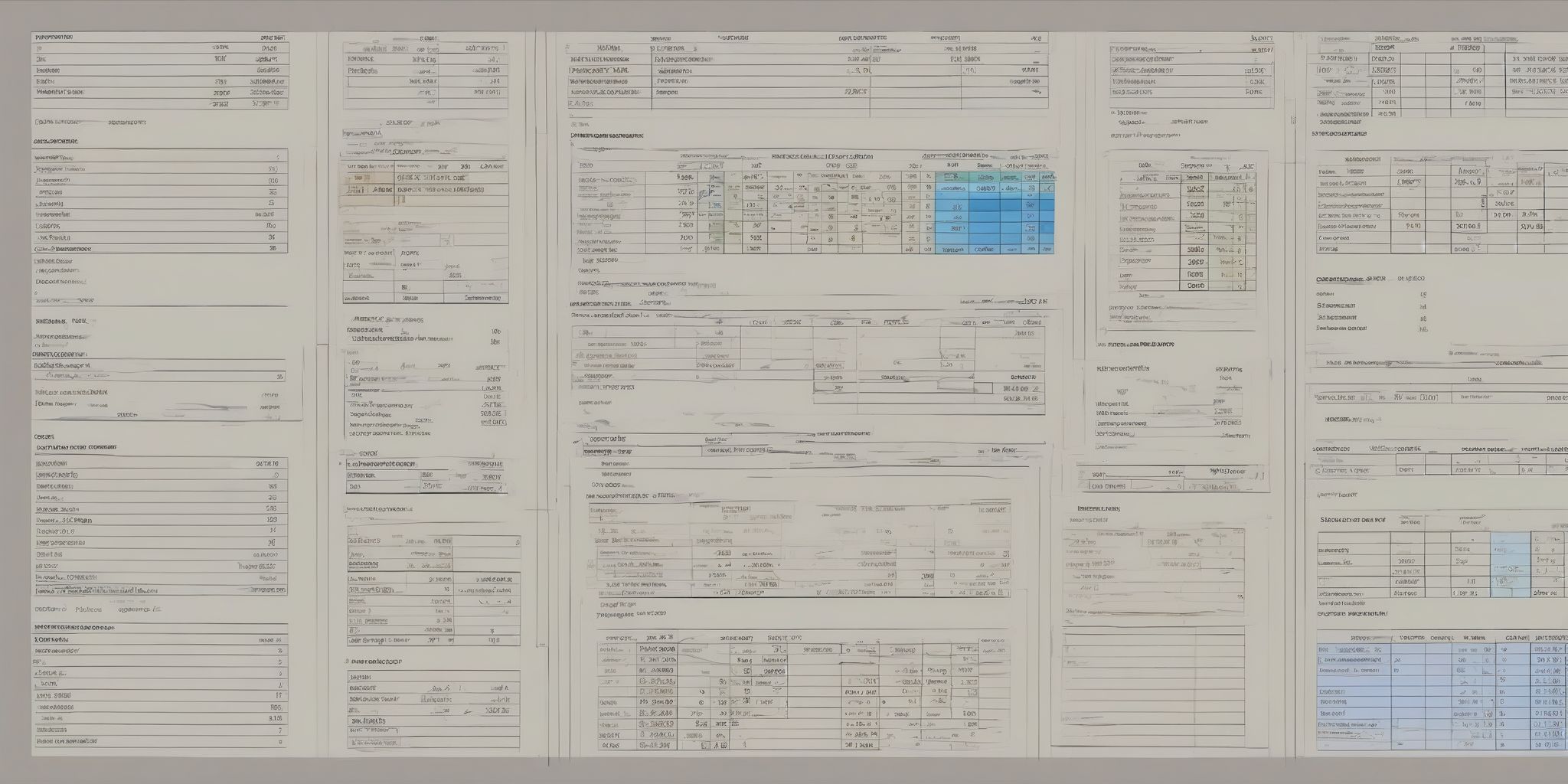Capital Gains and Taxes: Winning Strategies for Investors
Are you an investor looking to maximize your profits while navigating the murky waters of capital gains taxes? Well, you're in luck!
In this article, we will delve into the dynamic world of capital gains and taxes, uncovering some winning strategies that can help you optimize your investment returns. Whether you're a seasoned Wall Street aficionado or a newbie exploring the stock market realm, join us as we unravel the secrets to smartly manage your capital gains and keep more of your hard-earned money. So let's jump right in and discover how you can become a savvy investor with a knack for minimizing tax obligations.
Understanding Capital Gains and Taxes
- Capital gains refer to the profits made from selling an asset, such as stocks, real estate, or artwork, at a higher price than its original purchase price.
- These gains are subject to capital gains tax, which is calculated based on the length of time the asset was held and the individual's income tax bracket.
- Short-term gains, from assets held for less than a year, are taxed at the individual's ordinary income tax rate, which can be higher than the rate for long-term gains.
- Long-term gains, from assets held for over a year, enjoy lower tax rates, providing a potential tax advantage for investors.
- Understanding the different tax rates and holding periods for capital gains is crucial when developing tax strategies to optimize investment returns.
Importance of Capital Gain Tax Strategies
Tax strategies for capital gains are an integral part of any investor's financial plan. Here's why:
- Maximizing returns: By implementing effective tax strategies, investors can minimize the impact of capital gains taxes on their overall returns. This ensures that a larger portion of the gains is retained and reinvested, compounding growth over time.
- Tax efficiency: Smart tax planning can help minimize tax liabilities by strategically timing the realization of capital gains. By understanding the tax brackets and long-term vs. short-term rates, investors can make informed decisions to optimize their tax position.
- Creating flexibility: Effective tax strategies provide investors with flexibility in managing their investments. This includes options such as leveraging tax-advantaged accounts (like IRAs and 401(k)s) and utilizing tax-loss harvesting to offset gains with losses.
- Enhancing portfolio performance: By strategically considering the tax implications, investors can make better decisions regarding asset allocation, rebalancing, and investment selection to optimize their after-tax returns.
Remember, every investor's situation is unique, so it's crucial to consult with a qualified tax professional to determine the most suitable strategies for individual circumstances.
Tax Strategies for Capital Gains
Long-Term vs. Short-Term Capital Gains
Differentiating between long-term and short-term capital gains is vital for effective tax strategies. The tax rates imposed on these gains vary considerably. Long-term gains, which result from investments held for over a year, generally have lower tax rates compared to short-term gains.
For example, in the United States, long-term capital gains are taxed at favorable rates of 0%, 15%, or 20%, depending on the taxpayer's income. On the other hand, short-term gains are taxed at ordinary income tax rates. By understanding the distinction and aiming for long-term investments, investors can potentially reduce their tax liabilities and optimize their after-tax returns.
Difference in Tax Rates
Long-term capital gains and short-term capital gains are subject to different tax rates. Short-term gains, which arise from assets held for one year or less, are taxed at the ordinary income tax rates, which can be significantly higher than long-term capital gains rates. On the other hand, long-term gains from assets held for more than one year are eligible for lower tax rates, providing potential tax savings for investors. For instance, in the United States, the tax rate on long-term capital gains for most taxpayers is capped at 15% or 20%, depending on their income level. Understanding and considering the tax implications of holding periods when making investment decisions can help investors minimize their tax liabilities and maximize their after-tax returns.
Holding Period and Eligibility
When it comes to tax strategies for capital gains, understanding the holding period and eligibility is vital. For long-term capital gains, assets held for over one year are subject to lower tax rates compared to short-term gains. This can significantly impact your tax liability. By holding onto investments for the required period, investors can take advantage of favorable tax rates and potentially reduce their overall tax burden.
For example, if you sell stocks held for more than a year, you may qualify for long-term capital gains rates. It's important to be mindful of the holding period to optimize your tax strategy and potentially increase your after-tax returns.
Offsetting Gains with Losses
- One effective tax strategy for capital gains is offsetting gains with losses to minimize tax liabilities.
- When you sell an investment at a profit, you can offset the capital gains by selling another investment at a loss.
- The losses can be used to offset gains dollar-for-dollar, reducing your overall taxable income.
- Be aware of the wash-sale rule, which prohibits claiming a loss on a security if you repurchase a substantially identical security within 30 days.
- By strategically harvesting tax losses and using them to offset gains, investors can optimize their tax position and potentially lower their tax bill.
Harvesting Tax Losses
Harvesting tax losses is a valuable strategy in managing capital gains taxes. It involves selling investments that have declined in value to offset the gains from other investments. By realizing losses, investors can reduce their overall taxable income and potentially lower their tax liability.
For example, if an investor sold a stock that resulted in a capital loss, they could use that loss to offset capital gains from other investments, or even reduce their taxable income by up to $3,000 per year. It's important to note that tax loss harvesting should be done strategically and in compliance with tax regulations.
Netting Losses Against Gains
Netting losses against gains is a valuable tax strategy for investors. By offsetting capital gains with capital losses, individuals can potentially reduce their overall tax liability.
For example, if an investor realizes a $10,000 gain on one stock and a $8,000 loss on another, they can net the losses against the gains, resulting in a taxable gain of only $2,000. This can lead to significant tax savings. However, it's important to adhere to the IRS rules and regulations regarding wash sales and holding periods to ensure eligibility for this strategy. Consulting with a tax professional is recommended to navigate the complexities of this tax-saving technique.
Utilizing Tax-Advantaged Accounts
Utilizing tax-advantaged accounts is an effective tax strategy for managing capital gains. Contributing to retirement accounts like 401s and IRAs allows investors to defer taxes on their gains until they withdraw the funds, potentially in a lower tax bracket. In addition, Roth IRAs offer tax-free withdrawals of qualified distributions, making them valuable for long-term investment growth.
For example, contributing the maximum amount to a traditional 401(k) can reduce taxable income and provide a larger pool of tax-deferred investments. Take advantage of tax-advantaged accounts to minimize your tax liability and maximize your investment returns.
Contributing to 401(k) and IRA
Contributing to a 401 or an Individual Retirement Account (IRA) can be a savvy tax strategy for managing capital gains. These retirement accounts offer tax advantages that can help investors minimize their tax liabilities. By contributing to a 401(k) or IRA, investors can reduce their taxable income, potentially lowering their overall tax rate.
Additionally, any gains made within these accounts can grow tax-free until retirement, allowing for maximum compounding.
For example, a higher-income individual who contributes the maximum amount to their 401(k) can significantly reduce their taxable income, potentially putting them in a lower tax bracket and reducing the amount of capital gains taxes owed.
Taking Advantage of Roth IRA
- Consider contributing to a Roth IRA as part of your tax strategies for capital gains.
- With a Roth IRA, your contributions are made with after-tax money, allowing for tax-free growth and tax-free withdrawals in retirement.
- This can be especially beneficial if you anticipate capital gains in the future, as you won't owe taxes on the gains when you withdraw them.
- Roth IRAs also offer flexibility, allowing you to withdraw your contributions penalty-free before retirement if needed.
- By strategically utilizing a Roth IRA, you can optimize your capital gains tax situation and potentially enjoy significant tax savings in the long run.
Charitable Contributions
Charitable contributions can be an effective tax strategy for managing capital gains. By donating appreciated securities, such as stocks or mutual funds held for more than one year, investors can potentially reduce their tax liabilities. Not only can they avoid paying capital gains tax on the appreciation, but they may also be eligible for a charitable deduction on their tax return. This means that the investor not only supports a cause they believe in but also receives a tax benefit.
Many charities accept donations of appreciated securities, making it a convenient option for investors seeking to minimize their tax burden while making a positive impact.
Donating Appreciated Securities
One tax strategy for capital gains is donating appreciated securities. By donating stocks or mutual funds that have increased in value, investors can receive a tax deduction for the full fair market value without having to pay capital gains taxes on the appreciation. This allows them to support a charitable cause while also minimizing their tax obligations.
For example, if an investor bought a stock at $10 and it is now worth $100, donating it directly to a qualified organization would result in a tax deduction of $100. This strategy can be beneficial for investors looking to make a positive impact while optimizing their tax situation.
Tax Benefits for Charitable Giving
When it comes to tax strategies for capital gains, charitable giving can offer significant advantages. By donating appreciated assets, like stocks or mutual funds, investors can avoid capital gains tax while also receiving a tax deduction for the full market value of the asset. This double benefit can help investors maximize their tax savings and support causes they care about.
For example, if an investor purchased stock years ago for $1,000 and it has now appreciated to $10,000, donating the stock directly to a qualified charity would allow them to avoid paying capital gains tax on the $9,000 gain, while also receiving a tax deduction for the full $10,000 value of the donation.
Real-Life Examples of Successful Strategies
Warren Buffett's Long-Term Approach
Warren Buffett's long-term approach to investing aligns well with tax strategies for capital gains. By holding investments for an extended period, Buffett avoids short-term tax rates and benefits from lower long-term rates. His focus on value and quality companies allows him to weather market fluctuations and accumulate wealth. Investors can apply this strategy by investing in strong, stable companies with long-term growth potential.
Additionally, they should resist the temptation to frequently buy and sell stocks for short-term gains. Instead, adopting a patient and disciplined approach can lead to favorable tax outcomes and long-term investment success.
Peter Lynch's Stock Picking Strategies
Peter Lynch, renowned investor and former manager of Fidelity Magellan Fund, exemplified successful stock picking strategies that can also be advantageous from a tax perspective. Some of the key points to consider in relation to tax strategies for capital gains are:
- Lynch emphasized the importance of thorough research and analysis before investing in a stock. A well-informed investment decision can potentially lead to long-term gains, thereby qualifying for lower tax rates.
- His approach of identifying and investing in companies with solid growth prospects and sustainable competitive advantages could result in capital appreciation, deferring taxes until the gains are realized.
- Lynch also suggested evaluating the potential tax implications of selling a stock. By holding a winning position for over a year, investors may benefit from the long-term capital gains tax rates, which are typically lower than short-term rates.
- One of his famous stock picking strategies was investing in what he called "steady eddies," companies with consistent earnings and solid financials. Such investments could provide steady capital gains while minimizing the need for frequent trading and incurring additional taxes.
By adopting Lynch's prudent stock selection approach along with a keen consideration of tax consequences, investors can strive to optimize their capital gains while staying tax-efficient.
John Bogle's Index Fund Investing
John Bogle's Index Fund Investing is a tax-efficient strategy for capital gains. Here's why:
- Broad Market Exposure: Index funds aim to replicate the performance of a given market index, such as the S&P.
- By investing in a diverse range of stocks, investors can minimize the frequency of buying and selling, reducing taxable events.
- Lower Turnover: Compared to actively managed funds, index funds generally have lower turnover. This means fewer capital gains distributions, potentially reducing taxable income for investors.
- Tax Efficiency: Since index funds tend to have lower turnover and are designed to hold investments for the long term, they may generate fewer short-term capital gains, which are typically taxed at higher rates.
- Buy and Hold Strategy: Bogle's approach emphasizes long-term investing and discourages frequent trading. By holding investments for an extended period, investors may defer capital gains taxes until they decide to sell.
- Reinvested Dividends: Many index funds automatically reinvest dividends, allowing investors to defer taxes on those gains until they sell their shares.
Conclusion
Investors looking for winning strategies when it comes to capital gains and taxes have a lot to consider. This article provides a concise summary of key points to help them navigate this complex area. It emphasizes the importance of understanding the different types of capital gains and how they are taxed, including long-term and short-term gains. It suggests that investors should aim to hold their investments for more than a year to benefit from lower long-term capital gains tax rates.
The summary also highlights the potential advantages of offsetting capital gains with capital losses to minimize the overall tax burden.
Additionally, it mentions the importance of utilizing tax-advantaged accounts, such as IRAs and 401s, to further optimize tax efficiency.


